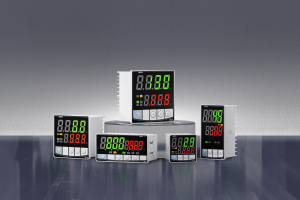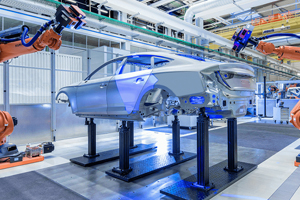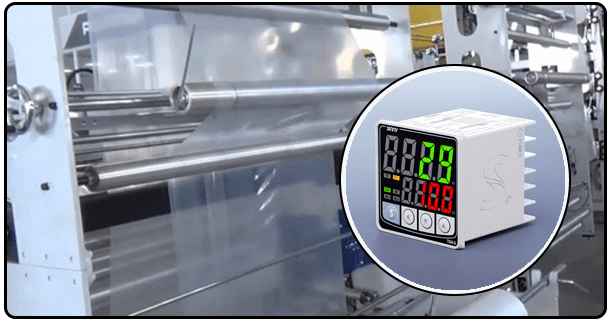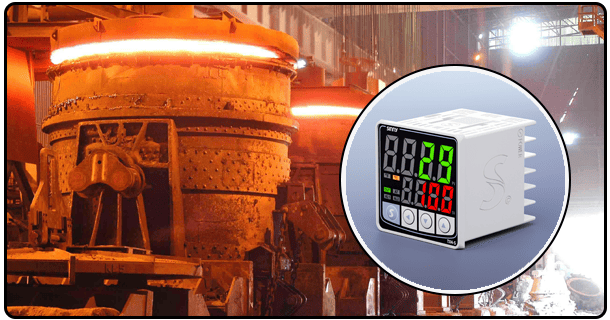Introduction to Perfect Smokes
They may even compromise the safety of food. Manual controls and basic thermostats often fail to achieve the balance required for long-term smoking.
The Smoker PID temperature controller can help. This is not another gadget, but a technology marvel that gives you control. The guide explores the PID world, including what it is, how it works, its advantages, different types, and the way to select the right one for you. Our experts will draw from established control system principles and real-world BBQ experiences to give you authoritative information.
1. What is the Smoker PID temperature controller?
A PID Smoker Temperature Control, at its heart, is a sophisticated electronic device designed to automate the process of temperature regulation within your smoker. This device replaces or improves the basic thermostat and offers superior precision.
This acronym PID is the key to it's effectiveness. It stands for Proportional Integral Derivative, a sophisticated algorithm.
Proportional (P), This component responds to current differences between the setpoint temperature and actual temperature. It will apply a greater corrective action if the temperature reading is off by a significant amount. The correction is reduced as the temperature approaches. The immediate issue is addressed.
Integral (I): The part that addresses errors accumulated over time. The integral component will remember if the temperature is consistently below (or above) the setpoint and apply a bias to correct the problem. This prevents the issue from recurring.
The derivative (D) is It looks at how fast the temperature changes. The derivative component can predict the future trends if the temperature changes rapidly. It will adjust the control to avoid large fluctuations. This helps to smoothen the response.
2. What is the Smoker PID controller? What's the magic behind the scenes?
Imagine that the controller is constantly monitoring the temperature inside your smoker with a dedicated temperature probe. (Often an RTD, thermistor or other high-accuracy temperature sensor). This is a simple breakdown of how the whole process works:
Temperature measurement: A probe measures the temperature in the smoker, and transmits that information to the main controller unit.
Comparison Compares temperature measured by the controller to temperature set in the display.
Calculation The controller uses its PID algorithm to calculate the exact adjustment required. The controller does not only consider the difference in temperature, but how long it has been there and the speed of change. The power or signal that is sent to the actuator depends on this calculation.
Actuation An actuator is a device which translates the signal from the controller into an action. It could be:
Relay for opening or closing a valve of a gas smoker.
Solid-state relays (SSRs) control the electric heater elements.
The PWM signal adjusts the speed of an electric fan or charcoal control.
A multi-probe interface module.
Loop Continuous: The entire process is repeated thousands of times every second creating an automatic feedback loop. This creates a stable atmosphere where your smoker will maintain its temperature even when you add wood chips or open the lid.
The constant intelligent adjustments are the secret to preventing the "hunting", (rapid changes in temperature) that is common with basic controllers. They also ensure your smoker will behave predictably.
3. Why use a PID temperature controller for a smoker? Benefits of a Smoker PID Temperature Controller
A Smoker PID temperature controller is not just an upgrade, it transforms your BBQ experience. Experts swear by these temperature controllers:
The results are consistent every time.
Setpoint recovery is faster: A PID controller will return to target temperature more quickly if you have to change the temperature, e.g. by opening the lid. It reduces time lost during cooking and the effect of changes in environmental conditions.
Highest Food Quality: Stable, consistent, and low temperatures ensure moist and tender smoked meats. Smoke will penetrate evenly if there are fewer fluctuations.
Advanced Programmable Profiles: Some models at the higher end allow for temperature ramps and hold times, which allows you to create complex smoke profiles that are tailored for specific types of meats or smoking techniques.
Features You Should Prioritize when Shopping for Smoker PID Control
All PIDs are not created equal. Consider these features to find the best PID controller for you.
Accuracy Search for controllers that specify high accuracy (e.g. +-0.5degC, or +-1degF). It shows how accurately it maintains the setpoint.
Temperature range: Make sure the controller is capable of handling the temperatures that your smoker can reach.
Tuning PID: This step is essential. You should be able to adjust the parameters P, I and D manually or automatically for your smoker. Some models offer guided tuning.
Display quality: For easy viewing, especially under bright sun or in low light, a backlit LCD display or LED is required. Some displays display the temperature setpoint along with the actual reading.
Compatibility of output: This aspect is crucial. It is important that the output of your controller be compatible with the heating system on your smoker. The most common outputs are Relay, Solid-State Relay and Pulse Width Modulation. Check the type of output for your setup, whether it is electric, gas or charcoal (check what actuator you need).
Inputs and Outputs: When you want to control more than one function or use different probes, such as for external thermometers or zones, choose a controller that has multiple input/output port.
User Interface: Take into consideration the interface. Does it seem intuitive? Is it easy to use? Are the functions easy to use?
Durability Barbecue environments can be tough.
Different types of PID controllers for Smokers
The design of controllers and their integration levels vary.
Electronic Standalone Controllers: This is the most popular type. The controllers plug into the smoker's heater circuit via a wire probe. Plug-and-play compatibility is offered. Some examples include models made by manufacturers such as SmokeFire or Weber.
Controllers Integrated: Certain high-end smokers, such as certain Traeger model smokes, integrate a digital controller with PID logic into the unit. They offer many advanced features, but they may be limited by their manufacturer.
Computer Based or Advanced Standalone Systems These systems are usually used for commercial smokers or high-end home smokers. These systems may include multiple controllers with independent programming, sophisticated data recording to USB/SD card, or a complex user interface. They are often used by companies such as Big Green Egg and some manufacturers of specialized BBQ products.
How to Install Your Smoker PID Control
When choosing the best controller, you should consider your smoking habits and level of expertise.
Get to Know your Smoker. Learn about the heating mechanisms (gas, electricity, or charcoal) of your smoker and their typical temperature range. The type of output that you require is determined by this.
Determine Your needs: Are you looking for a better smoking experience? Do you require advanced features such as multi-zone controls or logs? You will be able to choose between basic or advanced models based on your needs.
Check Reviews and Specifications. Visit BBQ forums and websites of specialized retailers (such as Mountain Valley Smoke or SmokeFire) to find manufacturer specifications. User reviews should discuss ease-of-use, accuracy and reliability.
Installation:
First, safety: Before working on your heating system, always disconnect power from the smoke (unplug cords) and the fuel supply (turn gas/electric off).
Read Your Smoker's Manual. Learn how to wire your smoker’s heating or thermostat system.
Install controllers according to instructions: Instructions for installation vary greatly between controllers. Read the manual carefully.
Steps to follow: In general, you will need to connect the probe and the output wire of the controller, then the power input for the controller (normally 110-120V AC). Certain controllers may require that specific actuators be installed between the output of the controller and the heating element.
Tuning You'll need to tune the PID parameters after installation to match your controller/smoker combination. Some controllers offer an automatic tuning function. Others require you to adjust PID values manually based on temperature responses.
Troubleshooting Check the basics first. Power connection, probe locati0n and function, wire connections and make sure the PID parameters have been correctly set. If the problem persists, consult with manufacturer support or forums.
4. Smoker PID Controller vs. Smoker PID Controller vs.
Compare the new solution to the old methods.
Thermostat Traditional (On/Off). Uses a simple thermistor or bimetallic coil. The thermostat turns on the heat when temperature falls below its setpoint; if it rises above it, then it switches it off. The temperature will often oscillate around the setpoint, causing significant swings in temperature.
Basic Digital Thermostat: Provides numerical readings and allows for setting of a particular temperature. Control is still usually a simple cycle of on/off based on the hysteresis. Precision is not as good as PID.
Smoker PID Controller: This controller uses a complex algorithm that continuously adjusts the heat output to minimize fluctuations while maintaining a high level of precision. This controller offers superior results, control and repeatability.
Although traditional methods are useful and often cheaper or simpler, the accuracy, consistency and reliability of a PID control represent an important leap forward. This is especially true for smokers who work with complex recipes or large batches.























